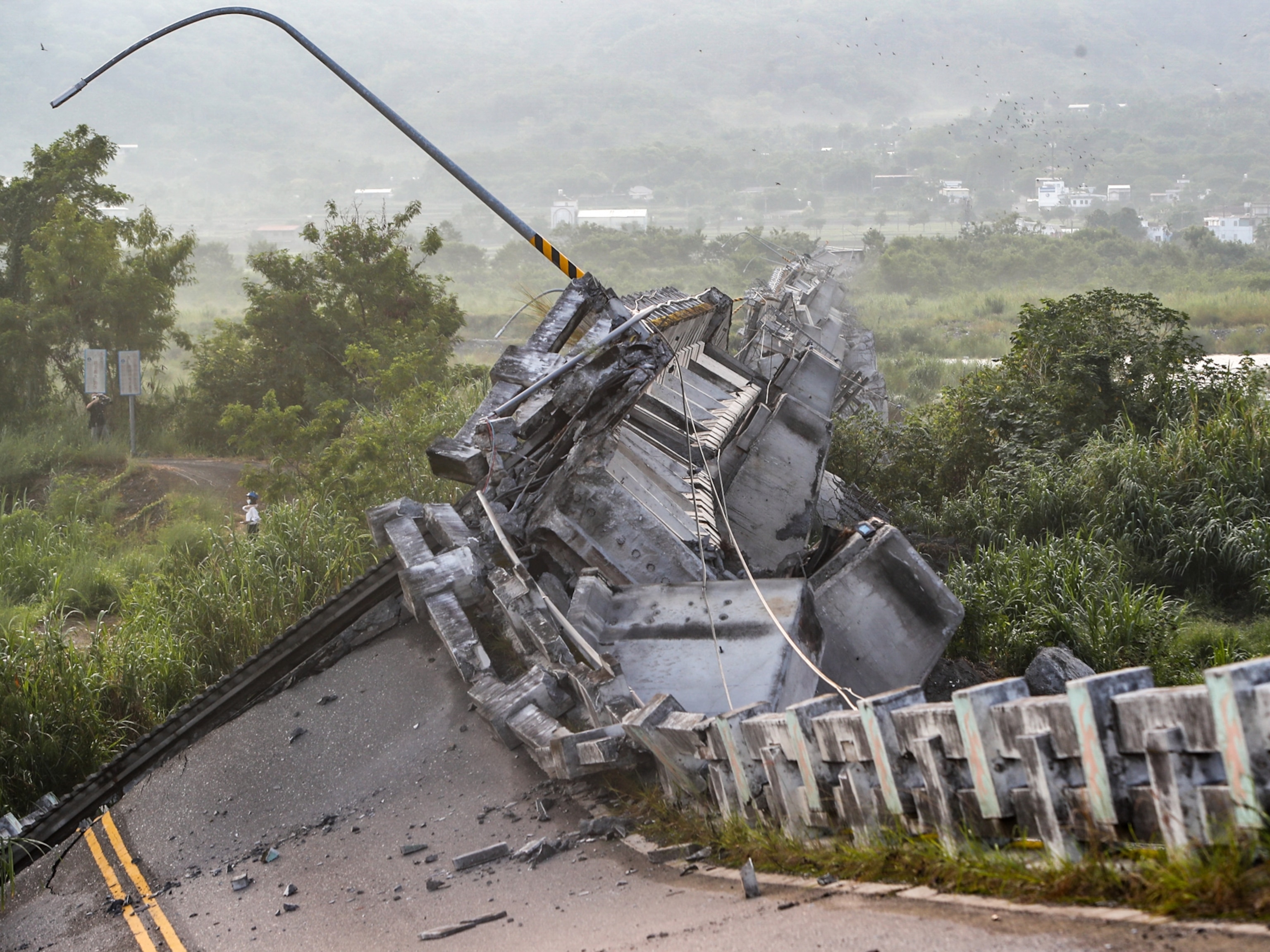
What is a tsunami? Here’s what causes the deadly ocean waves
Tsunamis are most often caused by underwater earthquakes. Climate change is making them worse.
One of the strongest earthquakes ever recorded struck Russia’s Far East this week, issuing tsunami alerts across much of the Pacific. The 8.8 magnitude earthquake set off warnings in Hawaii, North and Central America, Japan, and the Pacific islands.
A tsunami is a series of ocean waves that sends surges of water, sometimes reaching heights of over 100 feet (30.5 meters), onto land. These walls of water can cause widespread destruction and death when they crash ashore.
Japan has been impacted by strong earthquakes in the past, with a 9.1 magnitude quake hitting the area on March 11, 2011. Striking off the northeast coast of Honshu on the Japan Trench, the 2011 earthquake caused a tsunami, killing more than 15,800 people in the area.
Here’s what you need to know about what causes a tsunami and just how unpredictable these catastrophic ocean waves can be.
What causes a tsunami?
These awe-inspiring waves are typically caused by large, undersea earthquakes at tectonic plate boundaries. When the ocean floor at a plate boundary rises or falls suddenly, it displaces the water above it and launches the rolling waves that will become a tsunami.
Most tsunamis—about 80 percent—happen within the Pacific Ocean’s “Ring of Fire,” a geologically active area where tectonic shifts make volcanoes and earthquakes common.
Tsunamis may also be caused by underwater landslides or volcanic eruptions. They may even be launched, as they frequently were in Earth’s ancient past, by the impact of a large meteorite plunging into an ocean.
(Scientists didn't expect the 8.8 magnitude Russian megaquake for many more years. Why now?)
How climate change makes tsunamis worse
A warming planet can trigger landslides, which are particularly dangerous in places like Alaska, Canada, Chile, and Norway. As glaciers and permafrost melt, the soil becomes unstable, causing the earth underneath to shift and plummet to the sea.
Similarly, melting ice shelves and glacial calving can tumble into the sea causing massive waves to form. Melting ice may also play a role in increased volcanic eruptions. Thinning glacial sheets can cause magma reservoirs to rupture through the surface.
The most damaging effect of climate change on tsunamis is rising sea levels. According to the National Oceanic and Atmospheric Agency (NOAA), sea level globally has risen an average of 8-9 inches since 1880, and that average has more than doubled per year in the 20th century.
What tsunamis look like
Tsunamis race across the sea at up to 500 miles (805 kilometers) an hour—about as fast as a jet airplane. At that pace, they can cross the entire expanse of the Pacific Ocean in less than a day. And their long wavelengths mean they lose very little energy along the way.
In deep ocean, tsunami waves may appear only a foot or so high. But as they approach shoreline and enter shallower water they slow down and begin to grow in energy and height. The tops of the waves move faster than their bottoms do, which causes them to rise precipitously.
(3,600-year-old tsunami ‘time capsule’ sheds light on one of humanity’s greatest disasters)
What happens when a tsunami hits land
A tsunami’s trough, the low point beneath the wave’s crest, often reaches shore first. When it does, it produces a vacuum effect that sucks coastal water seaward and exposes harbor and sea floors. This retreating of sea water is an important warning sign of a tsunami, because the wave’s crest and its enormous volume of water typically hit shore five minutes or so later. Recognizing this phenomenon can save lives.
A tsunami is usually composed of a series of waves, called a wave train, so its destructive force may be compounded as successive waves reach shore. People experiencing a tsunami should remember that the danger may not have passed with the first wave and should await official word that it is safe to return to vulnerable locations.
Some tsunamis do not appear on shore as massive breaking waves but instead resemble a quickly surging tide that inundates coastal areas.
The best defense against any tsunami is early warning that allows people to seek higher ground. The Pacific Tsunami Warning System, a coalition of 26 nations headquartered in Hawaii, maintains a web of seismic equipment and water level gauges to identify tsunamis at sea. Similar systems are proposed to protect coastal areas worldwide.
(How the deadly 2004 Indian Ocean tsunami unfolded)
Types of tsunamis
There are two broad types of tsunamis—local and distant. As the name suggests, local tsunamis can hit the shoreline in about an hour, sometimes in minutes.
Distant tsunamis are also called distant-source, far-field, and teletsunamis. These tsunamis originate far away from a shore and can take several hours to arrive. A tsunami originating in Russia can take seven to eight hours to arrive in the United States.
13 Striking Photographs of Natural Disasters
What do tsunami warning systems mean?
According to the National Weather Service, there are four levels of tsunami alerts: warning, advisory, watch, and information statement.
A tsunami warning is the most critical. This alert means dangerous flooding and destruction is possible. When this alert is issued, it means people living in coastal areas should immediately move to higher ground.
An advisory alerts people to strong waves and ocean currents. Areas under a tsunami advisory should avoid beaches and waterways.
A tsunami watch is issued when there is a distant tsunami. This typically means there is no immediate danger but people should be on alert for more information and be prepared to act.
An information statement simply means that an earthquake has occurred, but there is no immediate threat of a tsunami.





















